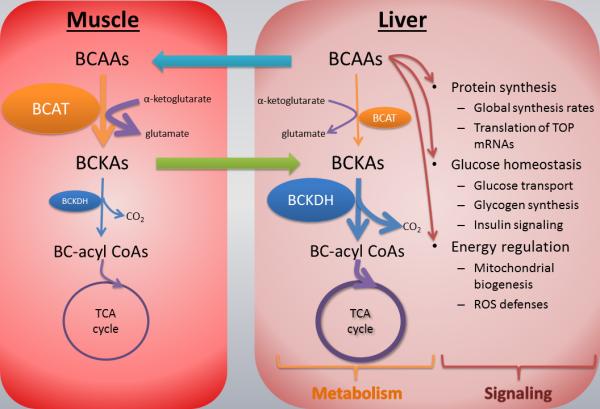Figure 1.

BCAA metabolism in liver and muscle. BCAAs absorbed from the gut reach the liver where they are taken up and play various signaling and protein synthetic roles. The BCAA catabolic pathway takes place within mitochondria, and consists of two major steps: reversible transamination with alpha-ketoglutarate to form BCKAs, followed by irreversible decarboxylation to form CoA compounds which enter the TCA cycle. The transamination step catalyzed by branched chain aminotransferase (BCAT) mostly occurs in muscle because this is where BCAT expression is highest. On the other hand, BCKA decarboxylation, catalyzed by branched chain ketoacid dehydrogenase (BCKDH), as well as later steps leading to complete oxidation, occur mainly in liver (19).
